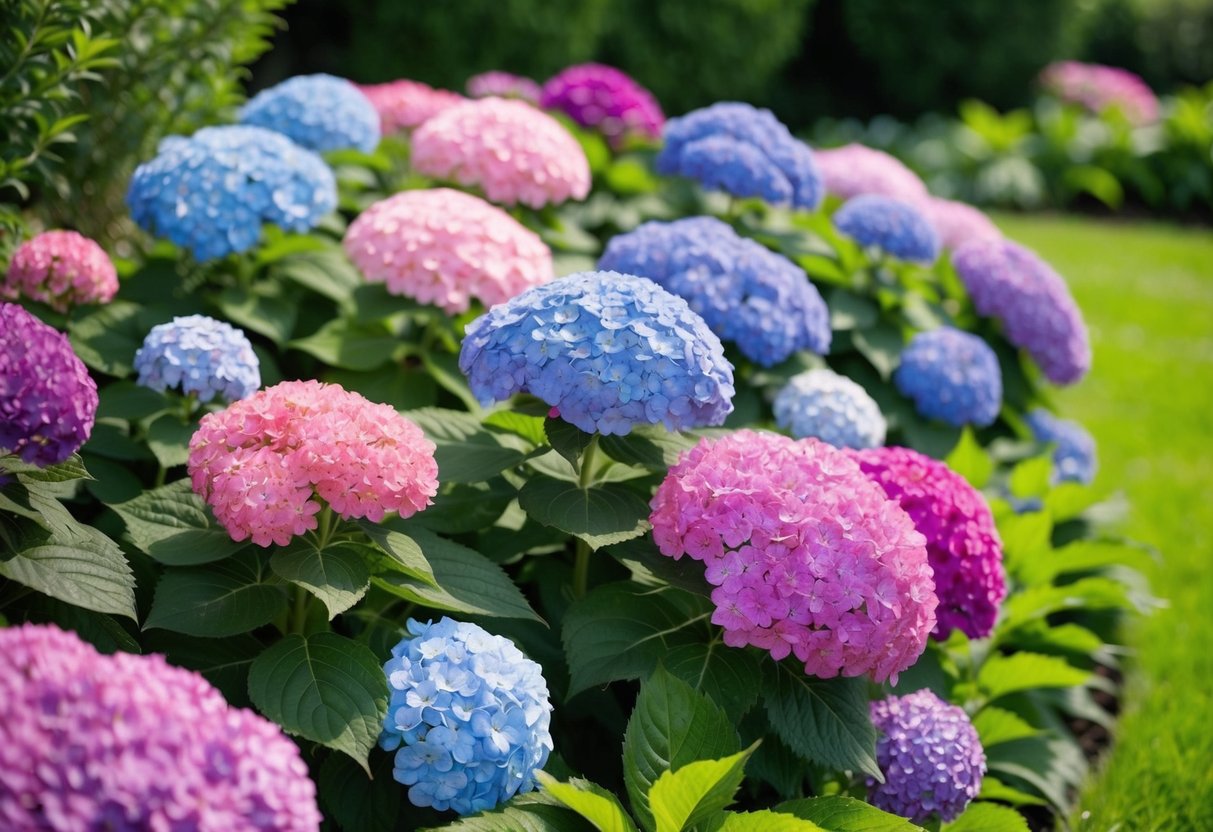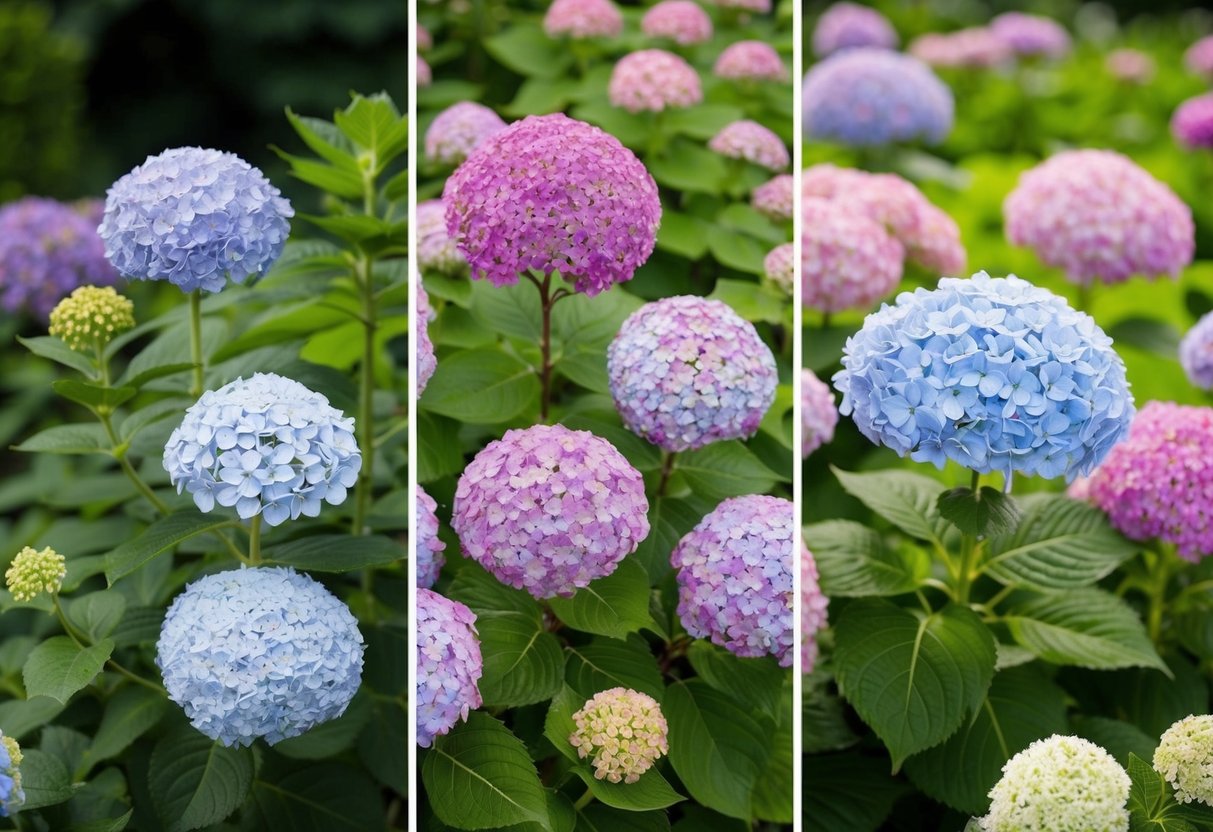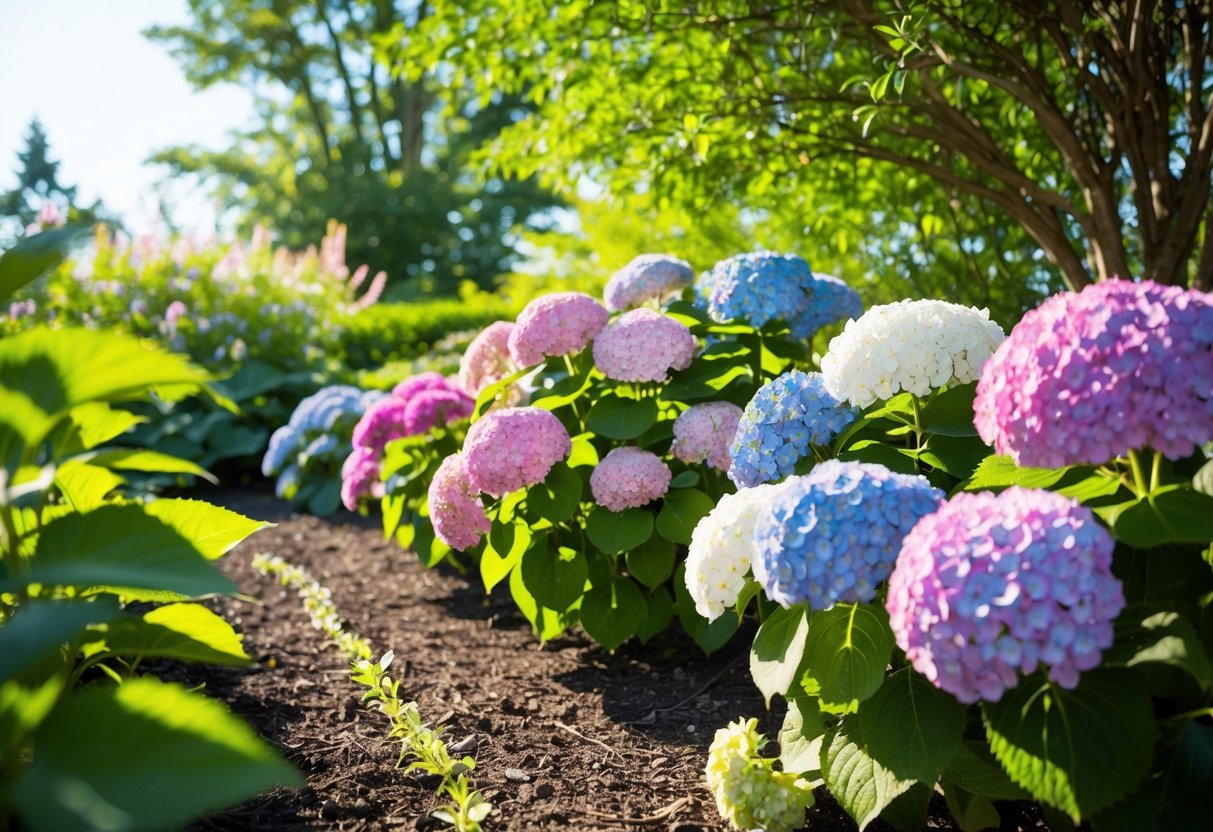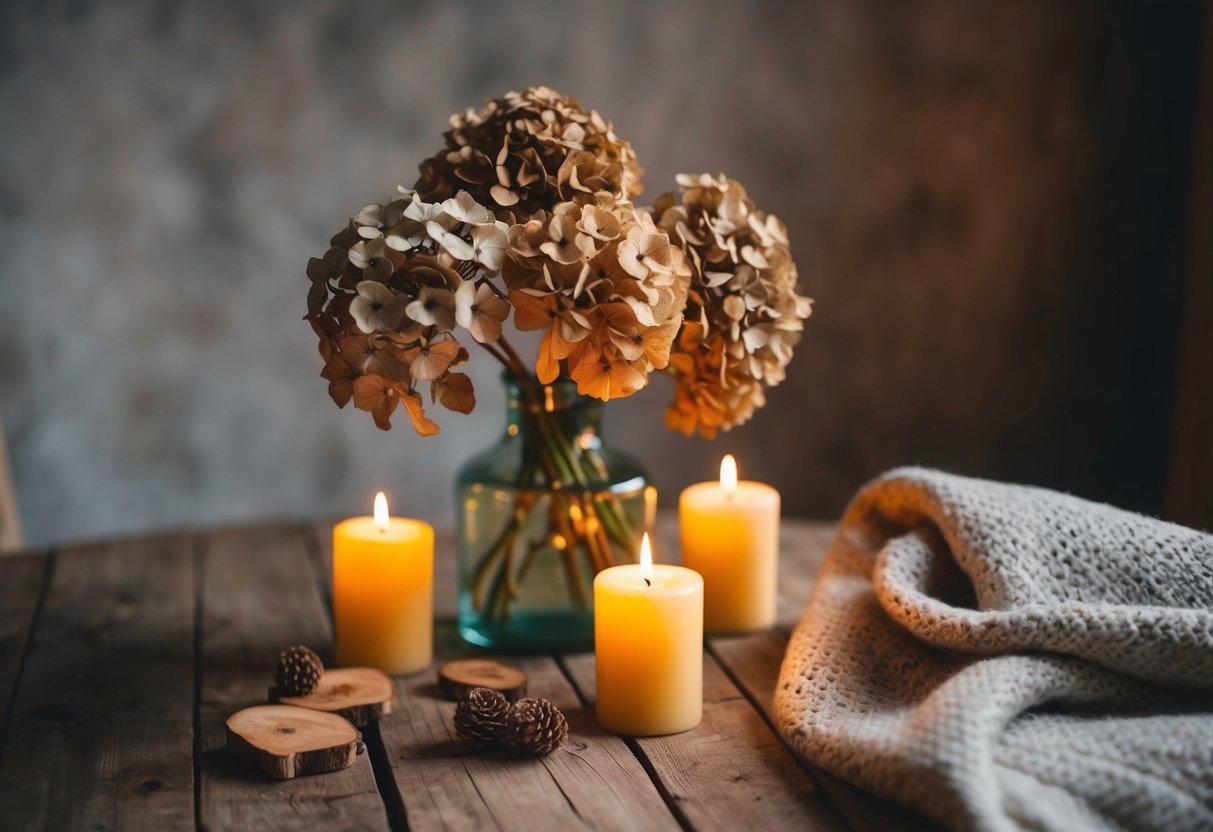Are Hydrangeas a Perennial or Annual? Gardening Tips to Know
When planning your garden, you might wonder whether hydrangeas are annuals or perennials. Hydrangeas are primarily perennials, meaning they return each year with beautiful blooms. This makes them a reliable choice for adding lasting color to your garden.

In some regions, gardeners treat hydrangeas as annuals due to climate factors. If you live in an area with harsh winters or extremely hot summers, hydrangeas may not survive the season without proper care.
You must choose a variety suited to your specific climate to enjoy a flourishing garden.
To make the most of hydrangeas, consider the hardiness zone of your location. Understanding your local climate can help you decide whether these lovely plants will thrive year after year. Planting hydrangeas in the right environment ensures they remain a vibrant part of your garden.
Understanding Hydrangeas: Perennials or Annuals?

Hydrangeas are a stunning addition to any garden, but knowing whether they are perennials or annuals can help you care for them better. Their classification affects how they survive through different seasons and how long they thrive.
Classification and Lifecycle
Hydrangeas are mostly perennials, which means they come back year after year. These plants usually go dormant in the winter but return in the spring with new growth. They’re known for their beautiful blooms during the warmer months.
One reason why they might be mistaken for annuals is that some varieties struggle in colder climates and might not survive winter in certain hardiness zones.
Choosing the right type of hydrangea for your area can affect how well they thrive and return yearly.
Differences Between Annuals and Perennials
Understanding the key differences between annual and perennial plants helps in their care. Annuals like marigolds complete their life cycle in one growing season, requiring replanting each year.
Perennials, such as hydrangeas, survive winter, coming back for several years. Their roots are hearty and can withstand cold temperatures, making them easier to maintain once they are established.
Having hydrangeas in your garden means less replanting work for you, as they naturally return each spring and bloom beautifully with proper care. Familiarize yourself with your local climate to ensure your hydrangeas fit as perennial shrubs in your garden.
Hydrangea Varieties and Their Growth Habits

Hydrangeas are loved for their beautiful, colorful blooms and diverse growth characteristics. Understanding these varieties helps you choose the best plants for your garden.
Species Overview
There are several types of hydrangeas, each with unique traits. Bigleaf hydrangeas are popular for their large, vibrant blooms and adaptability. They often display a range of colors depending on soil pH. You might also come across smooth hydrangeas, which are hardy and thrive in a variety of climates. Their white blossoms can brighten up any garden.
Another fascinating variety is the panicle hydrangea, known for cone-shaped flower clusters that change color as they mature. For something a bit different, consider the oakleaf hydrangea with flowers that resemble oak leaves. It offers beautiful fall foliage in addition to summer blooms.
Woody Perennials and Deciduous Shrubs
Hydrangeas mostly fall into the category of woody perennials and deciduous shrubs. These plants lose their leaves in winter but regrow them each spring. This characteristic makes them reliable choices for landscaping.
As a woody perennial, the climbing hydrangea can add vertical interest to walls and fences with its lush green vines.
Deciduous shrubs like lacecap hydrangeas—with their flat blooms surrounded by larger, showy flowers—can offer a unique texture to your garden. With proper care, these plants live for many years, adding structure and beauty to your outdoor space. If you live in a region with harsh winters, certain hydrangeas are hardy in zones 3-9, making them versatile and durable garden companions.
Optimal Growing Conditions for Hydrangeas

To grow hydrangeas successfully, it’s important to understand the ideal soil, sunlight exposure, watering, and nutrient requirements. These elements ensure healthy growth and vibrant blooms.
Soil Requirements and Sun Exposure
Hydrangeas thrive in well-draining soil rich in organic matter. They prefer slightly acidic soil, which helps them absorb nutrients effectively.
Adding compost or peat moss can improve soil quality and provide necessary nutrients. The soil’s ability to drain excess water while retaining moisture is crucial for hydrangeas.
For sunlight, hydrangeas generally prefer partial shade. This means they do well with morning sun and afternoon shade. The balance protects them from scorching in hot climates. However, in cooler regions, they may tolerate full sun with adequate watering.
When planting, consider the hardiness zones to ensure they receive the right amount of light and warmth.
Watering and Nutrient Needs
Hydrangeas require a consistent watering schedule. Deep watering once or twice a week is ideal, especially during hot, dry periods.
It’s important to check the soil moisture; the top few inches should feel slightly moist. This helps the roots absorb needed water without becoming waterlogged.
Fertilizing hydrangeas in early spring supports their growth. Use fertilizers specially formulated for acid-loving plants to provide essential nutrients.
You might choose balanced fertilizers or those geared towards boosting blooms. Follow package instructions to determine frequency and quantity.
Proper watering and nutrient balance lead to strong plants with lush blossoms.
Hydrangea Care and Maintenance

To keep your hydrangeas healthy and beautiful, you need to focus on certain care practices. Pruning is essential for shaping the plant and encouraging new growth, while winter protection ensures they survive cold temperatures.
Pruning Techniques
Pruning helps maintain the shape and health of your hydrangeas. It’s best to prune after the blooming season in late summer.
Focus on removing dead or crossing branches. Cut back about a fourth of the older stems to the base. This encourages new growth.
Use clean, sharp tools to prevent disease. Remember, pruning not only promotes lush foliage but also helps the plant use its energy efficiently in the growing season.
Winter Protection Strategies
Winter can be harsh on hydrangeas, so prepare them as they enter dormancy.
Start by adding a layer of mulch around the base. This provides extra insulation and retention of moisture.
Consider using burlap or frost covers if you live in areas with harsh winters. These strategies help protect the plants from freezing temperatures and frost.
By ensuring your hydrangeas are well-protected during the colder months, you maximize their chances of blooming beautifully when the weather warms up.
Innovative Ways to Enjoy Hydrangeas Year-Round

Hydrangeas can brighten any space with their beautiful blooms, making them perfect for creative gardening and thoughtful gifts. Whether you use them in containers, window boxes, or as decorative presents, hydrangeas offer stunning color and charm all year.
Hydrangeas in Containers and Window Boxes
You can enjoy the vibrant color of hydrangeas by planting them in containers or window boxes. This method allows you to add a touch of nature to small spaces like balconies or patios.
Potted hydrangeas thrive well with the right care. Ensure they have rich, well-draining soil and adequate water.
Choosing a container that complements your space can enhance the beauty of these ornamental plants. You can move them to different spots as needed to catch the best sunlight.
Window boxes provide another avenue to display your hydrangeas. They add an appealing frame of greenery to your home exterior. Properly maintained, these boxes will keep your hydrangeas blooming beautifully, drawing admiring looks from visitors and passersby.
Gift Hydrangeas: Annual or Perennial Delight
Gift hydrangeas are a delightful present for any occasion. Their lush blossoms make them a cherished choice for birthdays, anniversaries, or housewarmings.
When you gift a hydrangea, consider the recipient’s gardening skills and environment.
Most hydrangeas are perennials, but they might be treated as annuals in harsher climates. This doesn’t diminish their value as a gift. Instead, it encourages creativity in landscaping and container gardening.
A potted hydrangea can be nurtured indoors, offering beauty and life to any room. In milder climates, they can be transitioned to outdoor gardens, providing long-lasting enjoyment.
Such adaptability makes hydrangeas a versatile and appreciated gift for both novice and experienced gardeners alike.







